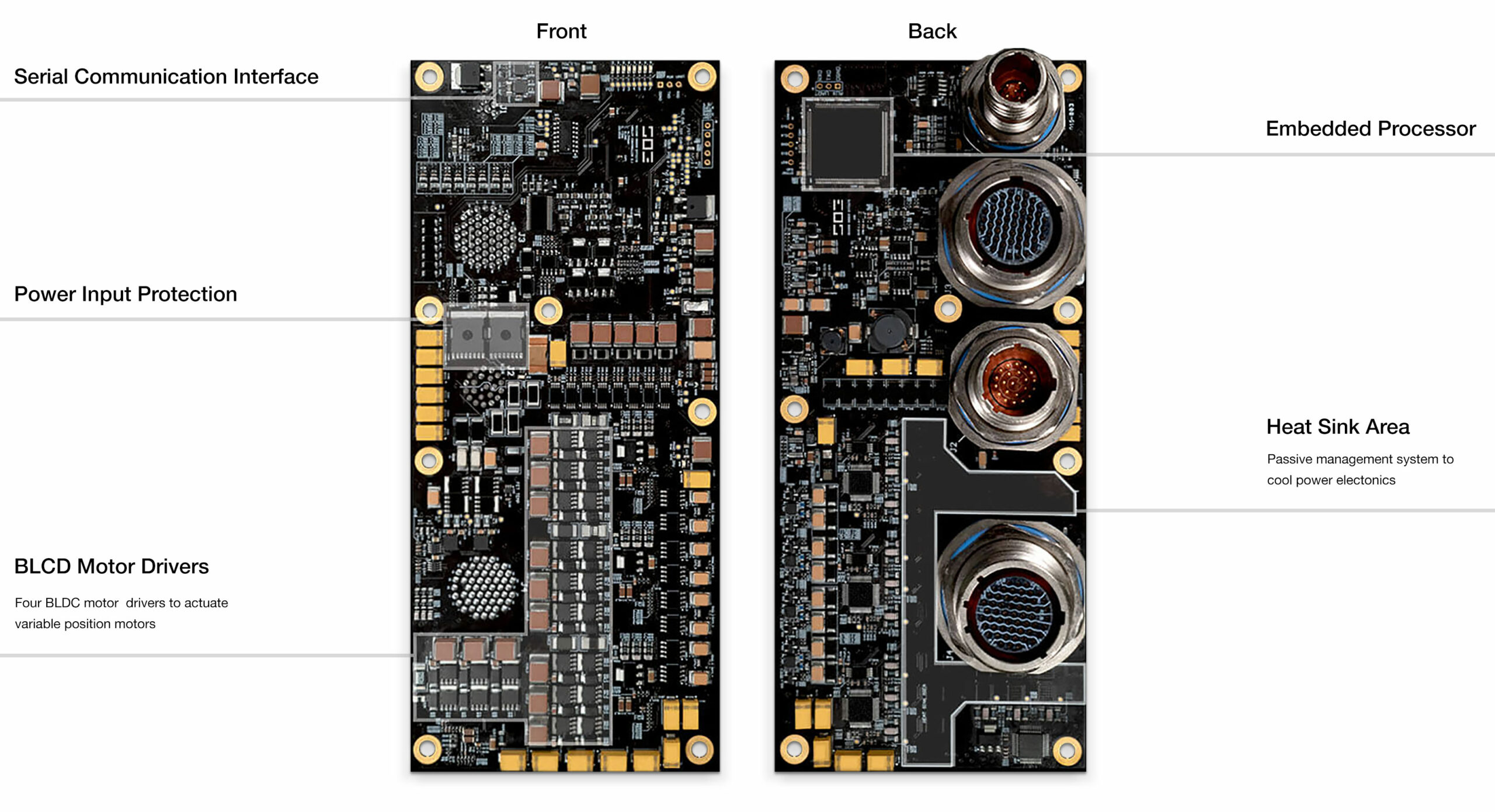When Ursa Major was a 10-person startup, they came to SOE with a request to build a new controller for their Hadley Engine. The Hadley is a 5,000 LBF thrust, liquid oxygen and kerosene engine designed for orbital and suborbital launch vehicles. Hadley is the first American oxidizer-rich stage combustion cycle rocket engine.
The controller had to be lightweight, reliable, space-worthy and efficient — without the exorbitant costs of traditional space-rated avionics. It had to control the engine’s throttle, propellant usage, thrust vectoring, and ignition timing, detect and isolate faults, and send out alerts if any of the above were off. With real-time control requirements and more than 25 I/O, the core of the controller would require a powerful embedded processor.
We designed a real-time embedded control system with I/O including temperature sensors, pressure sensors, BLDC motor drivers, valve drivers, speed and position sensors, and servovalve drivers, all in an 8” x 3.5” box. Our team explored and presented three production options: using all traditional space-rated parts, automotive parts, or a combination of off-the-shelf parts. The goal was to balance cost, testing requirements, reliability, and options for our customer.
Since 2016, we’ve helped URSA grow from a 10-person startup into an established aerospace company, landing additional propulsion contracts and attracting new rounds of investment. Today, we’re building a controller for their new Ripley Engine: a 35,000 lbf, liquid oxygen and kerosene engine designed to deliver industry-leading performance and power at a price point set to change the space launch industry. We’re grateful for our successful partnership and look forward to continuing to help Ursa grow.

